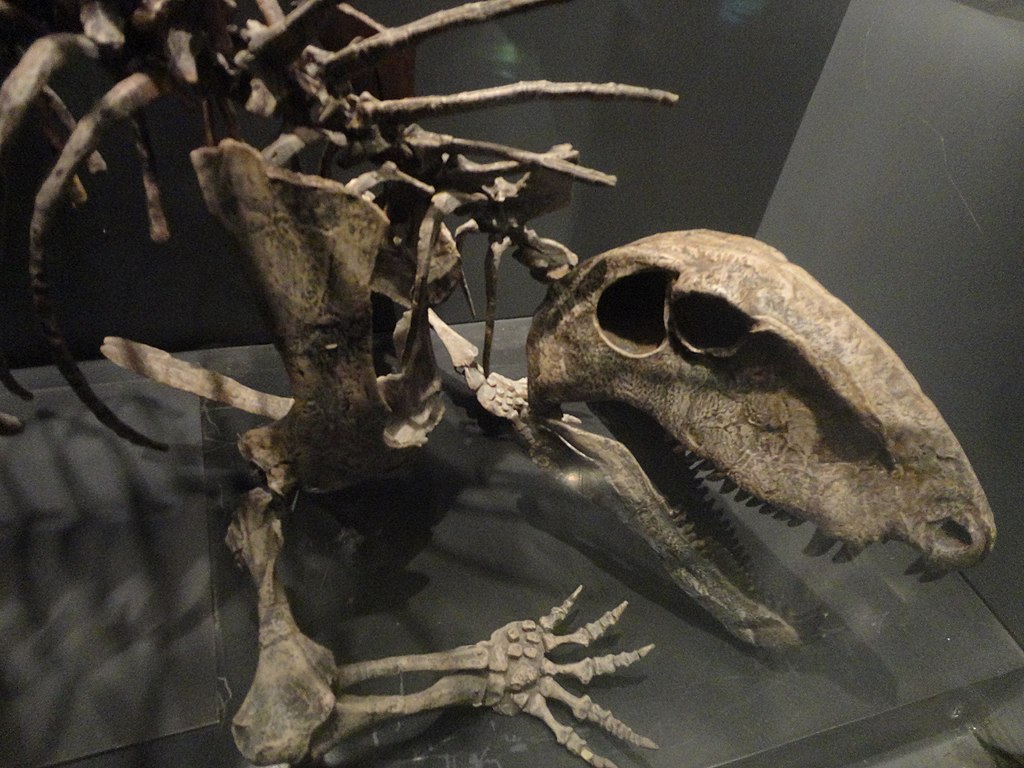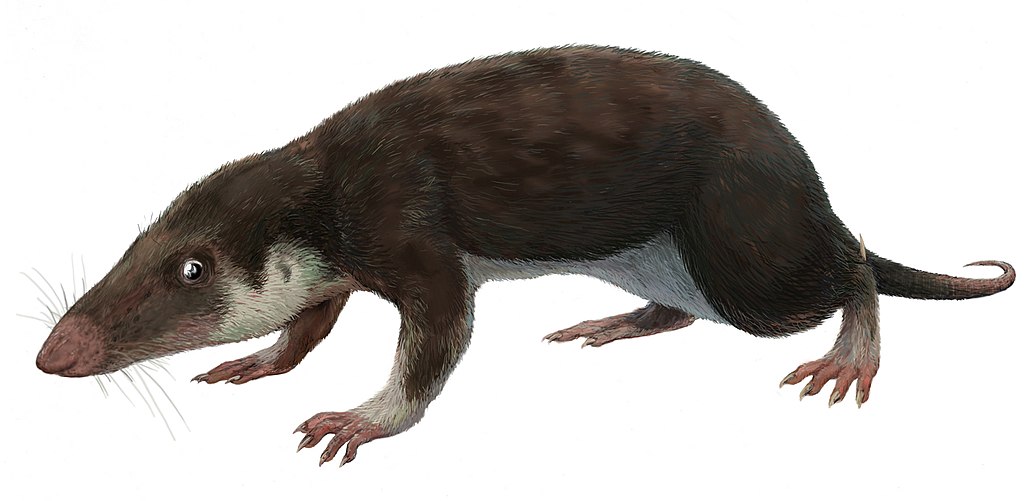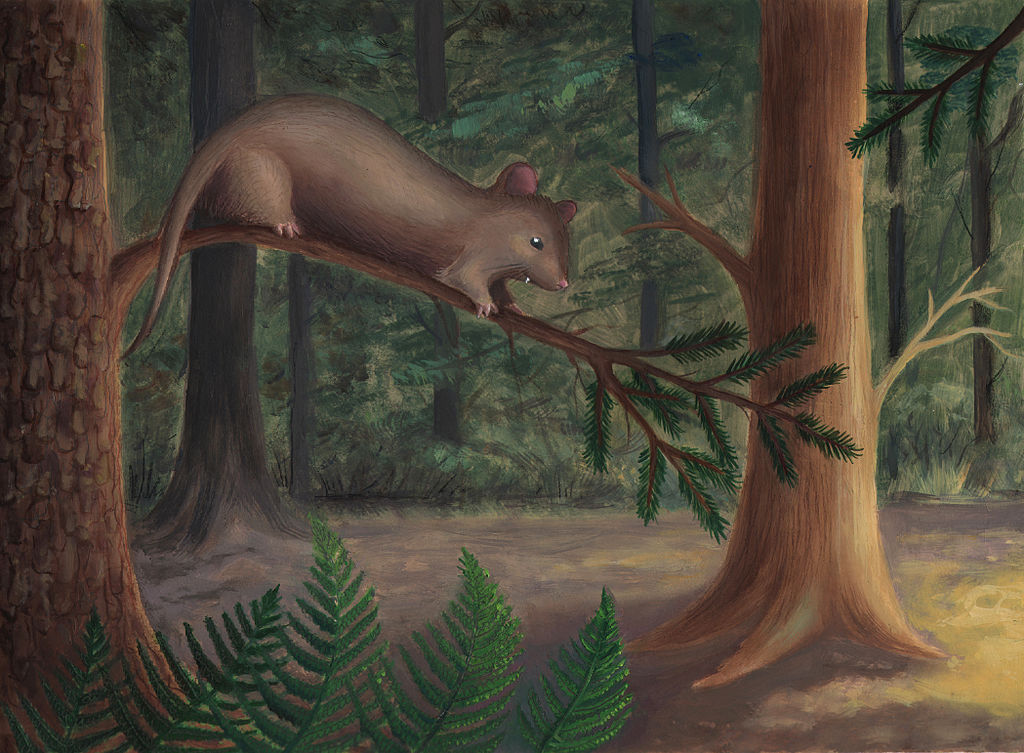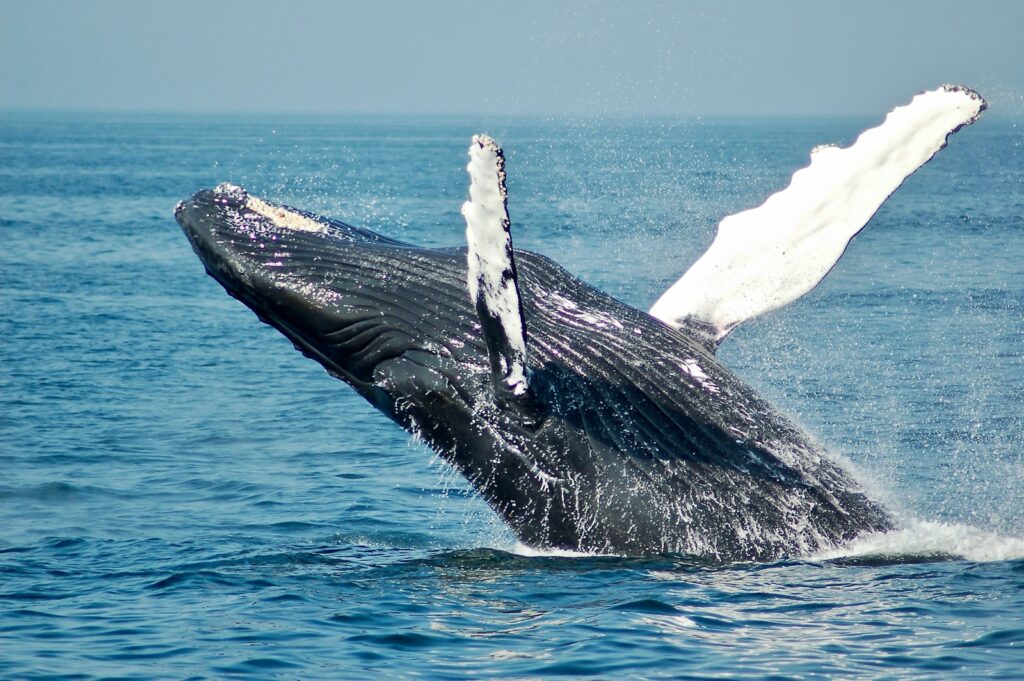The question of what was the first mammal on Earth takes us on a fascinating journey through millions of years of evolutionary history. While we may never have perfect certainty about the exact species that marks the transition from mammal-like reptiles to true mammals, paleontologists have made remarkable discoveries that help us understand our distant origins. These ancient ancestors emerged during a time when dinosaurs were beginning their own evolutionary story, setting the stage for the incredible diversity of mammals we see today – from tiny shrews to massive whales, from gliding squirrels to humans capable of contemplating their own evolutionary history. Let’s explore what science tells us about our oldest mammalian ancestors and the remarkable journey of mammalian evolution.
The Mesozoic Origin of Mammals

Mammals first appeared during the Late Triassic or Early Jurassic period, approximately 200-210 million years ago. This places the origin of mammals firmly within the Mesozoic Era, commonly known as the “Age of Reptiles” due to the dominance of dinosaurs. While dinosaurs were becoming the dominant land vertebrates, these early mammals were small, mostly nocturnal creatures that lived in the shadows of their reptilian contemporaries. The Mesozoic origin of mammals is significant because it demonstrates that mammals evolved and diversified alongside dinosaurs for over 150 million years before the mass extinction event that eliminated non-avian dinosaurs at the end of the Cretaceous period. This long period of coexistence allowed early mammals to develop many of their defining characteristics while occupying ecological niches that didn’t directly compete with the dominant dinosaurs.
Defining What Makes a Mammal

Before identifying the first mammal, we must understand what makes an animal a mammal in the first place. Modern mammals share several distinctive characteristics: they produce milk for their young through mammary glands (hence the name “mammal”); they have hair or fur covering at least part of their bodies; they’re endothermic (warm-blooded), maintaining a constant body temperature regardless of their environment; they have specialized teeth differentiated into incisors, canines, premolars, and molars; most give birth to live young rather than laying eggs; and they possess a unique jaw joint and middle ear structure. This last feature—the articulation between the dentary (lower jaw) and squamosal (part of the skull) bones, and the presence of three middle ear bones—is particularly important for paleontologists because these structures can be preserved in fossils. The evolution of these characteristics wasn’t simultaneous but occurred gradually over millions of years, making the boundary between “almost a mammal” and “true mammal” somewhat fuzzy in the fossil record.
The Synapsid Ancestors

Mammals belong to a larger group of animals called synapsids, which diverged from reptiles around 320 million years ago during the late Carboniferous period. The earliest synapsids, often called “mammal-like reptiles” in older literature, weren’t mammals themselves but represent our evolutionary precursors. Synapsids are characterized by a single opening in the skull behind each eye (the temporal fenestra), which distinguishes them from other reptilian lineages. Over millions of years, various synapsid groups evolved increasingly mammalian features in a gradual process. The pelycosaurs were early synapsids that still appeared quite reptilian, with famous examples including the sail-backed Dimetrodon. These gave rise to more advanced synapsids called therapsids, which showed even more mammalian characteristics. Within the therapsids, a group called cynodonts emerged that were extremely close to true mammals, with many showing nearly all the skeletal features we associate with mammals today, although they likely still laid eggs and may have lacked fur and mammary glands.
Morganucodon: A Contender for the First Mammal

Morganucodon, whose fossils date to approximately 205 million years ago during the Late Triassic period, represents one of the earliest known mammaliaforms—animals that were either true mammals or immediately ancestral to them. About the size of a shrew, roughly 10 centimeters long, Morganucodon displayed several critical mammalian characteristics including a dentary-squamosal jaw joint and a specialized pattern of tooth replacement. Its name comes from Glamorgan in Wales, where some of its fossils were discovered, though specimens have also been found in China, India, and North America. While some scientists consider Morganucodon a true mammal, others classify it as a near-mammal or a stem-mammal, highlighting the difficulty in drawing clear lines in evolutionary history. Analysis of its teeth suggests Morganucodon likely lived around 3-4 years, significantly longer than similarly sized reptiles, indicating it may have had the higher metabolic rate characteristic of mammals. This small creature hunted insects at night, using its sharp teeth and enhanced senses to survive in a world dominated by reptiles.
Hadrocodium: The Tiny Contender

Another strong candidate for one of the earliest true mammals is Hadrocodium wui, whose fossils were discovered in the Lower Jurassic beds of China’s Yunnan Province, dating to approximately 195 million years ago. Incredibly tiny, Hadrocodium weighed only about 2 grams and measured just 3-4 centimeters in length, making it one of the smallest mammals ever known, fossil or modern. What makes Hadrocodium particularly significant is its cranial anatomy, which shows a more advanced development of mammalian characteristics than Morganucodon. It possessed a fully mammalian middle ear, with the three ear bones (malleus, incus, and stapes) completely detached from the jaw—a key diagnostic feature of true mammals. Hadrocodium also had a relatively larger brain case than earlier mammaliaforms, suggesting enhanced brain development, another hallmark of mammalian evolution. Its small size would have made it an effective insectivore, possibly hunting at night when the dominant reptiles of the time were less active.
The Importance of the Middle Ear

The evolution of the mammalian middle ear represents one of the most remarkable transformations in vertebrate history and serves as a key indicator for identifying the earliest mammals. In reptiles, the jaw contains several bones, and sound is conducted to the inner ear through a single bone called the stapes. During mammalian evolution, two bones from the reptilian jaw—the articular and the quadrate—gradually migrated to become part of the middle ear, transforming into the malleus and incus, respectively. Together with the stapes, they form the three-ossicle chain characteristic of the mammalian middle ear. This transformation didn’t happen overnight but occurred gradually across millions of years. Transitional fossils show various stages of this process, with creatures like Morganucodon having a double jaw joint—maintaining both the ancestral reptilian connection and the new mammalian joint. This anatomical rearrangement allowed for more sensitive hearing, particularly of high-frequency sounds, which would have been advantageous for detecting insect prey and avoiding predators in the night.
The Three Major Mammal Lineages

The earliest true mammals would eventually diversify into three major lineages that still exist today: monotremes (egg-laying mammals), marsupials (pouched mammals), and placentals (mammals that develop a placenta during pregnancy). This diversification began during the Jurassic period, around 175-200 million years ago. The monotremes, represented today only by the platypus and echidnas of Australia and New Guinea, retain several primitive features including egg-laying. Marsupials, which give birth to highly underdeveloped young that continue development in a pouch, and placentals, which give birth to more developed offspring after a longer gestation period, diverged from each other later, probably in the Early Cretaceous around 125-140 million years ago. Understanding when these lineages diverged helps paleontologists determine which features were present in the earliest mammals and which evolved later in specific groups. Fossil evidence suggests that the common ancestor of all modern mammals had already evolved true mammalian characteristics like mammary glands and fur, though early monotremes, marsupials, and placentals would have looked quite different from their modern descendants.
Life as an Early Mammal

The earliest mammals lived very different lives from most modern mammals, occupying a specific ecological niche in the Mesozoic world. Being small, typically between 3-20 centimeters in length and weighing from a few grams to perhaps a hundred grams, these early mammals likely had high metabolic rates that required them to eat frequently, focusing on energy-rich foods like insects, worms, and possibly small vertebrates or eggs. Most evidence points to them being primarily nocturnal, using the night hours to forage while avoiding the larger diurnal reptilian predators. Their enhanced senses, particularly hearing and smell, would have been crucial for survival in low-light conditions. The fur covering their bodies—a defining mammalian trait—provided insulation to maintain their warm-blooded metabolism and may have included specialized sensory hairs similar to the whiskers of modern mammals. Their high-crowned teeth with precise occlusion patterns allowed for more efficient processing of food, supporting their active lifestyle. While dinosaurs dominated the daylight hours and large-bodied niches, these small, furry creatures were developing adaptations that would eventually allow mammals to diversify explosively once the non-avian dinosaurs disappeared.
Why Size Mattered

The small size of early mammals was not a coincidence but likely an evolutionary response to the ecological conditions of the Mesozoic Era. With dinosaurs and other large reptiles dominating most terrestrial ecosystems, the early mammals found their opportunity in miniaturization, allowing them to exploit resources and habitats that were inaccessible or undesirable to larger animals. This small size had profound implications for their physiology and lifestyle. Their high surface-area-to-volume ratio meant they lost body heat quickly, requiring a higher metabolic rate to maintain their body temperature—a challenge that likely drove the evolution of fur and other insulating adaptations. Small size also meant they could hide more effectively from predators, squeezing into tiny crevices and burrows for protection. Additionally, their diminutive frames allowed them to climb trees and other vegetation with ease, potentially accessing food sources unavailable to larger animals. Perhaps most significantly, small size shortened generation times, potentially allowing for more rapid evolution and adaptation compared to their larger contemporaries. This would prove advantageous when environmental conditions changed dramatically at the end of the Cretaceous period.
The Mammalian Brain Revolution

One of the most significant developments in early mammalian evolution was the expansion and reorganization of the brain, setting mammals apart from their reptilian ancestors. Early mammals showed an enlargement of the cerebral cortex, the brain region associated with higher cognitive functions, as well as enhanced sensory processing regions for smell, hearing, and touch. This neural expansion likely supported the nocturnal lifestyle of early mammals, allowing them to navigate and hunt effectively in low-light conditions where visual information was limited. Fossil endocasts—models of brain cavities from ancient skulls—reveal that even the earliest true mammals had larger brains relative to their body size than their immediate ancestors. The olfactory bulbs, responsible for processing smell information, were particularly well-developed in early mammals, suggesting that scent detection was crucial to their survival. Additionally, regions associated with motor coordination expanded, likely improving agility and enabling more complex movements necessary for climbing and capturing prey. This neural revolution, while modest compared to later mammalian brain evolution, represented a critical step toward the cognitive complexity seen in many modern mammals.
Controversy and Competing Theories

The question of what constitutes the first true mammal remains a topic of ongoing debate among paleontologists, with competing theories and interpretations of the fossil evidence. Some researchers define “mammal” strictly based on skeletal characteristics, particularly the fully formed mammalian middle ear, which would place the emergence of true mammals in the Early Jurassic around 190-200 million years ago. Others argue for a more inclusive definition based on likely physiological and behavioral characteristics, which might push the origin of mammals slightly earlier into the Late Triassic. The classification is further complicated by incomplete fossil specimens, as soft tissues like mammary glands and fur rarely fossilize, leaving scientists to infer their presence based on skeletal indicators. Molecular clock studies, which estimate divergence times based on genetic differences between modern species, sometimes suggest earlier origins for mammals than the fossil record indicates, creating additional controversy. Some paleontologists argue that creatures like Adelobasileus from the Late Triassic of Texas, known only from a partial skull, might represent an even earlier mammal than Morganucodon or Hadrocodium, though the fragmentary nature of the specimen makes definitive classification difficult.
The Mammalian Success Story

From their humble beginnings as small, nocturnal insectivores, mammals have become one of the most successful and diverse groups of vertebrates on Earth. This success story began modestly during the Mesozoic Era, with early mammals diversifying into several lineages while remaining relatively small and ecologically constrained. The real mammalian revolution came after the extinction of non-avian dinosaurs at the end of the Cretaceous period about 66 million years ago, which opened countless ecological niches for mammals to exploit. Within just 10 million years following this extinction event—a blink of an eye in geological terms—mammals had evolved into forms as diverse as primitive primates, early hoofed mammals, and the ancestors of whales. Today, mammals occupy virtually every habitat on Earth, from the deepest oceans to the highest mountains, from tropical rainforests to polar ice caps. They range in size from the 2-gram Etruscan shrew to the 190-ton blue whale, displaying an extraordinary variety of adaptations for locomotion, feeding, and reproduction. This remarkable diversity all traces back to those small, early mammals of the Mesozoic, whose adaptations for warm-bloodedness, parental care, acute senses, and ecological flexibility set the stage for one of evolution’s greatest success stories.
Conclusion: A Continuing Evolutionary Story

The search for the first mammal illuminates not just our origins but the nature of evolutionary transitions themselves. Rather than a single, definitive “first mammal,” what we see in the fossil record is a gradual accumulation of mammalian traits across millions of years, with creatures like Morganucodon and Hadrocodium representing crucial transitions along this journey. As new fossils are discovered and new analytical techniques are developed, our understanding of mammalian origins continues to evolve, much like the mammals themselves. What remains clear is that the earliest mammals were remarkable creatures whose adaptations—from warm-bloodedness to parental care—laid the foundation for an extraordinary evolutionary saga that eventually included our own species. The story of the first mammals reminds us that even the most dominant groups of organisms often begin as small, seemingly insignificant creatures finding their unique way to survive in a challenging world. By studying these distant ancestors, we gain not only knowledge about our biological heritage but also perspective on our place within the vast, ongoing story of life on Earth.



